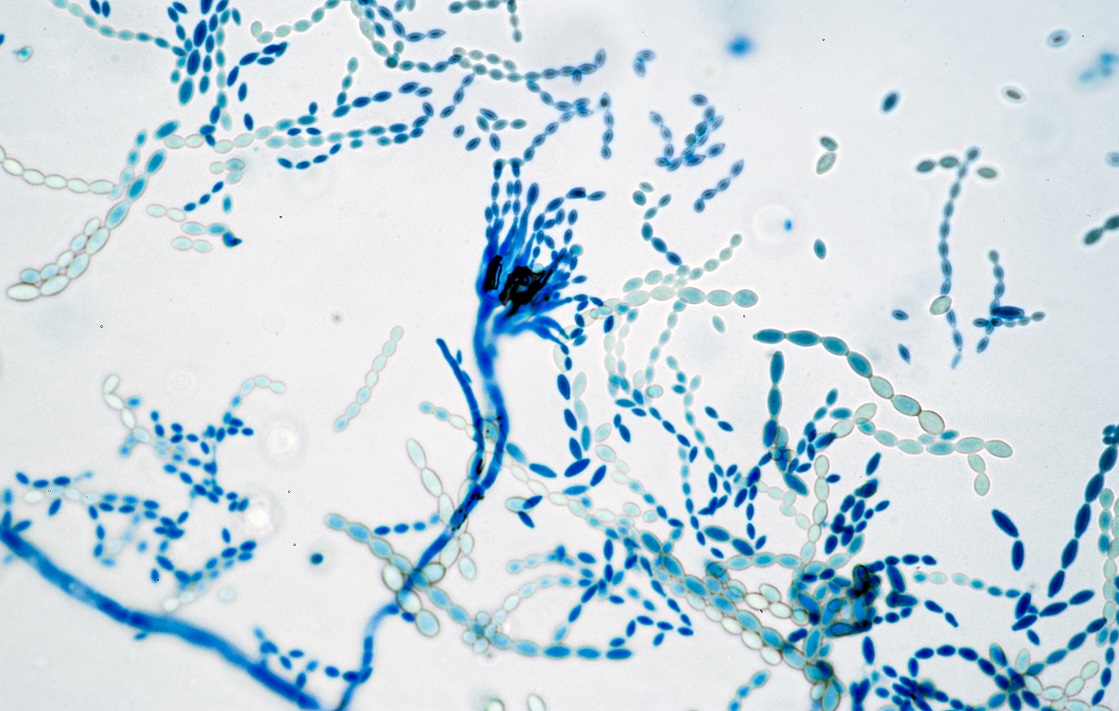Mould analysis
General about molds
Micans offers analysis of the amount of spores in air and analysis of solid materials where the growth of molds is suspected. We can analyze the types and species of mold that occur and we can, upon request, perform a risk analysis and establish a risk assessment of whether the mold growth is hazardous to health or not.
Mold hazards: Molds are microscopic fungi that can quickly destroy building materials when they are damp. It is common for mold to form foul-smelling, volatile substances that in many cases are harmful to health. When the mold is well outgrown, large amounts of spores are often formed which accelerate the spread and can trigger severe allergic reactions when inhaled. Actinomycetes are bacteria that are sometimes called mold bacteria as they are very similar to molds. Soil odor is typical of actinomycetes.
The Swedish Work Environment Authority prescribes that the employer must assess whether there are risks of ill health and accidents caused by biological agents in the workplace (AFS 2018: 4 *). Risk assessment shall be carried out to identify all microbiological work environment risks and assess the measures to be taken. Biological agents are microorganisms that can multiply or transfer genetic material. These are divided into 4 risk classes depending on the ability to cause infection and how serious the consequences will be.
Methods, price, sampling and transport
Track measurement in air by cultivation
Analysis of the air content of mold spores in the air is performed by sampling a certain volume of air using air samplers (Bioaerosol sampler MicroBio MB2) equipped with a culture plate. Once mold colonies have grown, the number of spores per air volume can be calculated. A good limit value can be set in relation to what is measured in the incoming air, i.e. outdoor air serves as a reference. If the measured values in rooms exceed the reference value in outdoor air, there may be sources of mold in the room. If the values are in the same order of magnitude as outdoor air, there is probably no ongoing mold infestation in the room.
The analysis includes:
The number of colony-forming / living molds and actinomycetes per m3 of air (cfu / m3). Identification of important indicator organisms, Mold: i.a. Aspergillus, Chaetomium, Paecilomyces, Penicillium, Rhizopus, Stachybotrys, Actinomycetes: Streptomyces and others.
Sampling, transport and delivery time:
Air samplers loaded with culture plates for analysis can be rented from Micans (companies only). The culture plates are marked with the respective sample marking and placed in separate plastic bags which are sent, preferably the same day or the day after, directly to the laboratory together with the air sampler. Instructions for sampling with air samplers are attached. Delivery time for analysis results is between 8-12 working days.
Analysis cost:
Cultivation, per sample 1710 SEK
Rental of air sampler per day at customer (shipping cost will be added) 210 SEK
Material analysis by cultivation
Analysis for control of molds and actinomycetes on suspected damaged materials such as walls, beams, wallpaper or other surfaces is performed by culture. If possible, samples of damaged material can be sent. Alternatively, we can deliver so-called contact plates which are pressed against suspected damaged areas and then returned immediately to our laboratory. The methods enable an analysis where the amount and identification of existing live molds and actinomycetes can be determined. The method is mainly suitable for determining the presence of living microorganisms.
The analysis includes:
Amount of colony-forming / living mold and actinomycetes per contact plate or per cm2 of material sample. Identification of important indicator organisms, Mold: i.a. Aspergillus, Chaetomium, Paecilomyces, Penicillium, Rhizopus, Stachybotrys, Actinomycetes: Streptomyces and others. Sampling, transport and delivery time: Material samples must be sent in separate well-sealed marked plastic bags. This is to avoid possible cross-contamination, but also for staff safety. The contact plates are marked and placed in their respective accompanying plastic bag, which is sent, preferably the same day or the day after, directly to the laboratory. Instructions for sampling are attached to the contact plates. Delivery time for analysis results is between 8-12 working days.
Analysis cost:
Cultivation contact plates, per sample 1550 SEK
Cultivation submitted material, per sample 1975 SEK
Order samplers and sampling materials as well as collection of samples and samplers
Contact us by phone on +46 31 338 32 30 or at analys@micans.se for orders and order forms. It is an advantage for the laboratory's planning if you can inform us about the type of sample, number of samples and estimated arrival date in advance. Samples and completed delivery notes are then sent to the laboratory according to the instructions.
Microbial Analytics Sweden AB
Bruksgatan 17
SE-435 35 Mölnlycke, Sweden
Contact us for a quote if you want Mican's staff to perform sampling on site.
The air sampler can be rented per day for SEK 210 excluding transport day. Shipping costs will be added. The customer is responsible for loaned equipment and that it is in the same condition as return upon receipt. The equipment should therefore be tested on arrival to ensure that it is in good order and without transport damage. Lost or unrepairable equipment is charged with the new acquisition value (pump approx. SEK 25,000). Repairable equipment is charged with repair cost.
Collection of samples
Micans can arrange for collection and transport of samplers and samples, you will then receive shipping notes to be placed on the transport box. Micans need to know the physical collection address, contact details of the person on site and the time when the samples are ready for collection. There must be a responsible person on site who hands over the samples to the transport company.

Microscopy of contrast-colored Paecilomyces variotii. Photo: Micans

Spore collections of Aspergillus flavus. Photo: Micans
